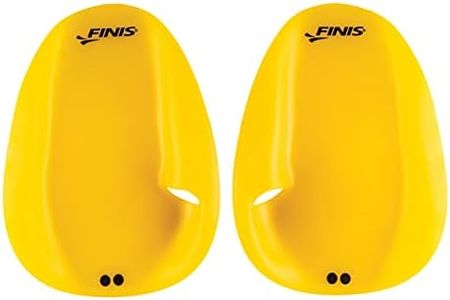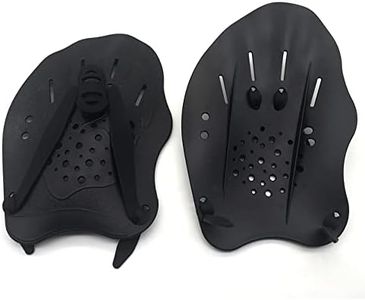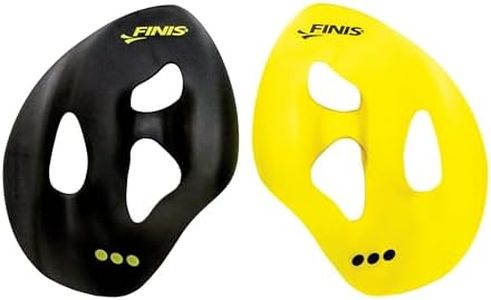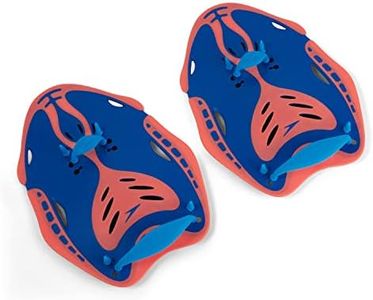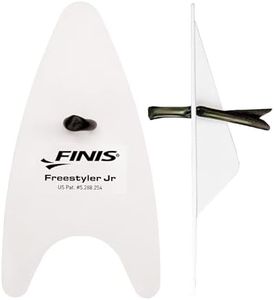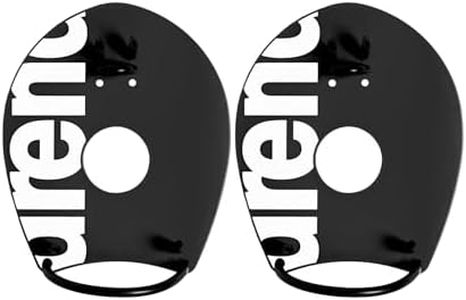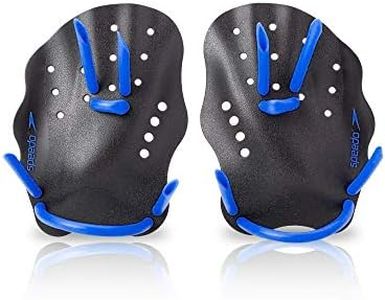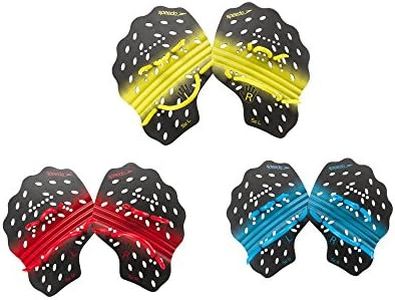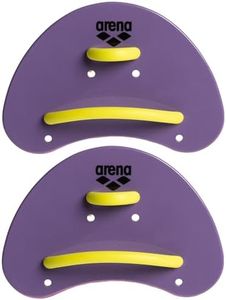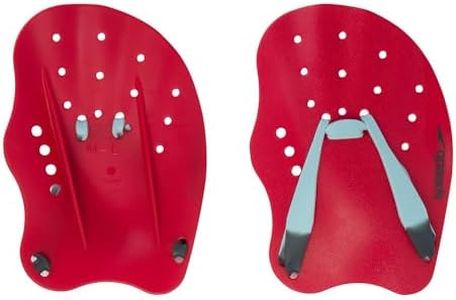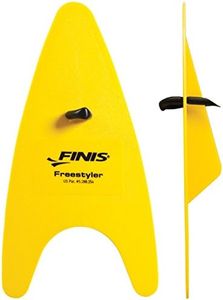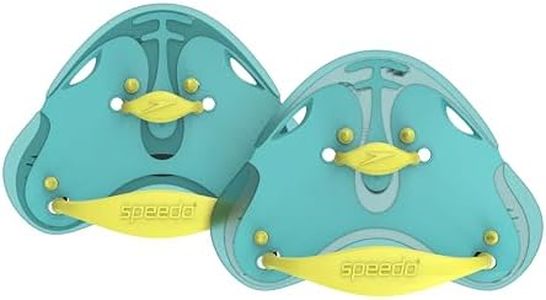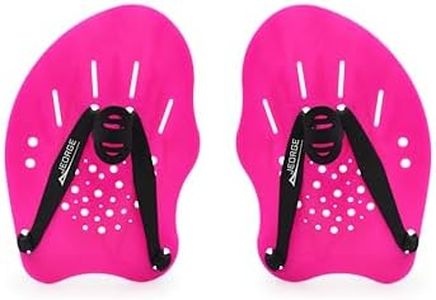We Use CookiesWe use cookies to enhance the security, performance,
functionality and for analytical and promotional activities. By continuing to browse this site you
are agreeing to our privacy policy
10 Best swim hand paddles
From leading brands and best sellers available on the web.Buying Guide for the Best swim hand paddles
Choosing the right swim hand paddles can make a huge difference in your swimming experience, whether you're training for speed, working on technique, or simply adding a challenge to your workouts. The main goal of hand paddles is to help you build upper body strength and improve your stroke by increasing water resistance. Picking the right paddles depends on your swimming goals, hand size, comfort level, and skill. Understanding key specifications will help ensure you select a pair that boosts your performance and keeps your hands and shoulders safe.Paddle SizePaddle size refers to the overall area of the paddle that covers your hand. Larger paddles create more resistance in the water, making your muscles work harder, while smaller paddles offer less resistance and are easier on your shoulders. For beginners or swimmers focused on technique, smaller paddles are often better as they reduce the risk of injury and allow you to maintain proper form. Advanced swimmers who want to build power might opt for larger paddles. Always start with a size close to your hand and only go bigger as your technique and strength improve.
Paddle ShapePaddle shape can range from perfectly flat and rectangular to contoured or ergonomically designed to match the natural shape of your hand. Flat paddles give straightforward resistance and are good for general training, while contoured paddles can help guide your hand into the correct position during your stroke. If you’re looking to work on specific technique points, a shaped paddle might be better; for all-purpose training, a classic flat paddle is sufficient.
Hole Placement and SizeHand paddles often have holes to allow water to flow through, which helps reduce the amount of force needed and provides a more natural feel in the water. More or larger holes mean less resistance and better 'feel' for the water, which is useful for technique work. Fewer or smaller holes increase resistance for strength training. Choose according to whether you prioritize developing strength or improving technique and water sensitivity.
Strap SystemThe strap system refers to how the paddle attaches to your hand, typically through rubber or silicone straps. Some paddles have a single finger or wrist strap, while others have multiple adjustable straps for a secure fit. Straps that are too tight or hard to adjust can be uncomfortable or cause chafing. If comfort and ease of use are high priorities for you, look for paddles with soft, flexible, and adjustable straps. Some advanced paddles have a strapless design that relies on proper technique to stay in place; these are best for experienced swimmers.
MaterialMost hand paddles are made from plastic or silicone materials. Thicker, rigid plastics provide more resistance and are durable but can be less forgiving on the joints, while softer or slightly flexible paddles are gentler and more comfortable but may wear out faster. If you swim frequently or need lots of resistance, opt for a sturdy paddle. For occasional use or technique training, comfort and flexibility might be more important.
